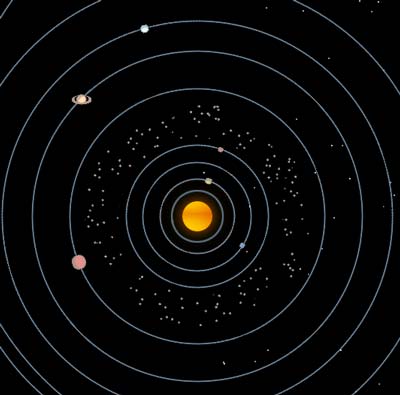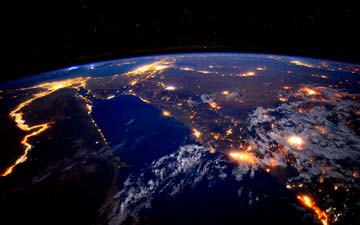Persieds Meteor Shower
Active from July 17-August 24 & peaks the night of August 12
Top 10 Reasons You Missed the Perseids Meteor Shower
TOP 10 REASONS why you don't see any meteors during the Great Perseids Meteor Shower in August
You know which meteor shower I'm talking about. Every August, newspapers, local news, radio DJ's, and the internet tell you to get ready for the big August Perseids Meteor Shower. Some give you instructions on how to set up your lawn chairs, bring bug spray, teach your children what meteors are, and then settle in and relax and watch a show of about 60 meteors an hour on the selected peak night.
Now you and your family, especially your 10-year-old daughter who has a telescope you bought at Costco but still hasn't been able to see anything in it, are finally in for a satisfying astronomical experience. After all, the article in the paper said that the best way to observe a meteor shower is with the naked eyes. No telescope or binoculars required. Just lay back, look up, and enjoy what is described as a fireworks show.
Here are the top ten reasons why this seldom works:
#10 Clouds. August is a very cloudy month in the Northern Hemisphere. In some areas, the chances of getting a clear night may be next to null. A partly cloudy night will obscure only parts of the sky. If you can see any stars at all, keep your eyes on that area of the sky. You may see a few meteors.
#9 Light pollution. Folks believe that they can just sit in their backyard and look up. If you live in a big city, light pollution will blot out every thing but the brightest meteors. You will need to leave town if live near a population of 100,000 people or more because there will be too much light pollution.
#8 You left the porch light on. What if you’re lucky enough to live in a smaller town — ideally one with 25,000 people or less? Or better yet, what if you live on a farm in a rural area, or are summering at a lake house far from big cities? You still may not see anything if you decide to keep your porch light on or the lights in your house so that you don't stumble in the dark. If you want to see meteors, create the darkest viewing environment possible.
#7 Your flashlights are the wrong color. Let's say you took care of all those problems and it's dark enough to see the Milky Way, that glowing band that stretches South to North in the Summer. If you can see our own Milky Way Galaxy, you will be able to see the Perseids Meteor Shower. But even if you turned off all the neighboring lights and you're away from street lights, if you’re using flashlights, you're still going to create local light pollution. If, for example, you have some of those great new LED lights, you're going to blind yourself every time you turn them on. You need to put red nail polish or red cellophane across the front of your flashlights so that their light beams are red. Red light does not cause your iris to contract and thus will prevent night blindness.
#6 You went out on the wrong night. Another reason for missing the Perseids is going out on the wrong night. When you go to a movie on the night of August 12, you are sitting in the theater at 7 pm – the night of August 12th. But astronomers who are up all night start their observing nights closer to midnight, and for them the night of August 12 is really the early morning hours of August 12. So when you hear that the Perseids are best observed on the night of August 12, they really mean the early morning (1 am) of August 12, which is the evening of August 11. This has so confused the general public that some science writers now take this into account and will publish the date as August 11. Others will not make that adjustment with the reasoning that if you want to play out in the cosmos you better get your terms right because astronomers can be a snooty lot, all enamored with their special language and nomenclature. After all, these are guys who are out all night on a lonely mountain top while everyone else is sleeping. They have no life, so confusing the public may be their only source of entertainment.
#5 You looked in only one direction in the sky. Another misleading bit of information that the science editors of the mass media taunt us with is that the August meteor shower is called the Perseids because the meteors all appear to radiate from the constellation Perseus, near Cassioipeia and the Andromeda Galaxy. That must mean that you need to wait for Perseus to rise in the skies since that is where all the meteors are coming from. WRONG! Meteors in a meteor shower appear everywhere. Just look some place up in the sky and you will see them. Don't worry about the direction. The best place to look is the darkest part of sky, since meteors can be faint and there you'll see more.
#4 You threw in the towel. If you've planned a big meteor shower observing event where you have gathered the whole family and kids from school and then clouds moved in, remember to hang in there. Unless it starts pouring rain, if you're willing to stay up all night, sometime the skies will clear later in the evening and the group event you planned with your school principal and all the permission slips will not be in vain.
#3 You thought you were God. You are watching the heavens from Earth and just as we humans cannot predict the weather and cloud formations, we certainly cannot control them. Be playful and remember you're not God and that the skies will not necessarily be clear during the two hours you set aside to forego TV and do something real and meaningful with your family or housemates. Be patient and keep looking, the cloud cover can change any time at night.
#2 You thought you missed it. When providing meteor shower viewing times, scientists calculate the maximum activity, which this year is supposed to be between 1am and 3am on the morning of August 12. Well, scientists are often wrong. You might get an awesome display any time before or after that on any of the candidate days of August 9 – 14. It's not a wedding that you missed or were late for, it's a celestial phenomenon governed by the unpredictable changing dynamism of gravity and other fundamental forces of the universe.
#1 And finally the number one top ten reason for missing the Perseids: you stopped looking up! People are led to believe a meteor shower is a light show event or a 9 pm fireworks show on the 4th of July that lasts for an hour and then it's over. You get in your car and go home. It's actually a one-week event and nobody — not NASA, not the Hubble Space Telescope, not even the Pope at the Pope Scope at the Vatican Observatory in Arizona — knows when the stunning display of dust and debris will enter our atmosphere and strike awe and wonder in the minds and hearts of your friends and family. So remember, keep looking up!
 See an animation of the movement of planets in our solar system.
See an animation of the movement of planets in our solar system. See amazing views from space
See amazing views from space